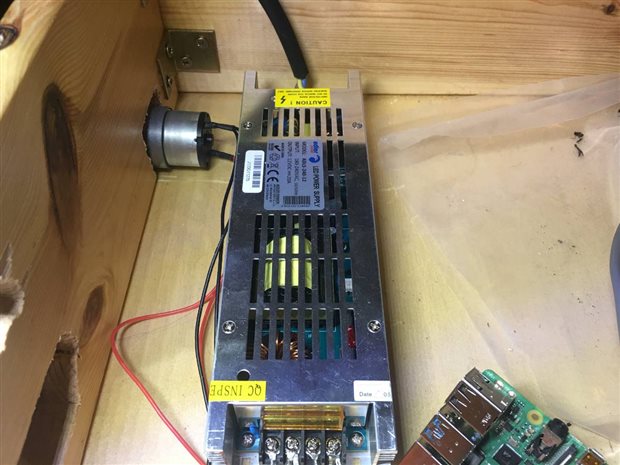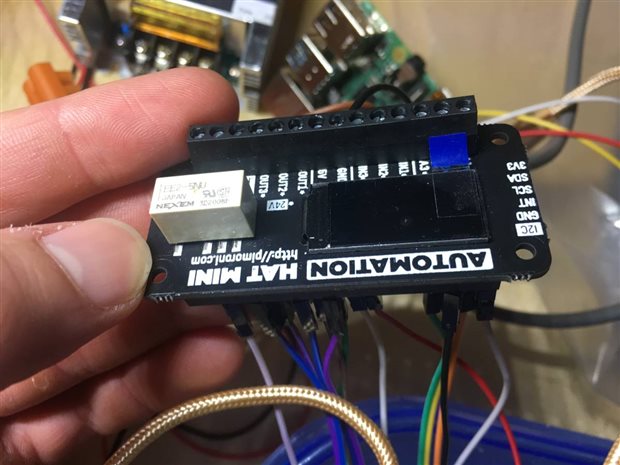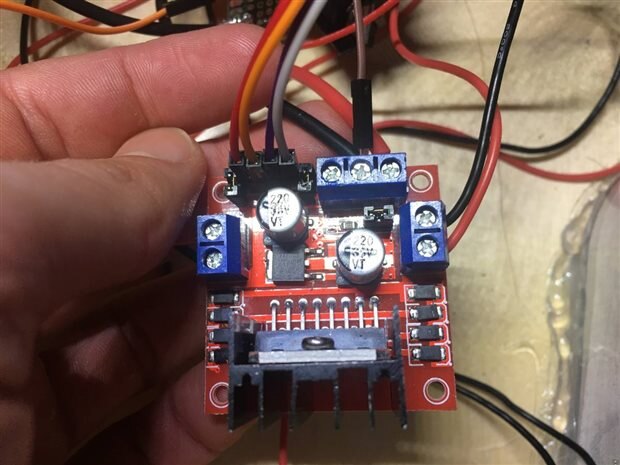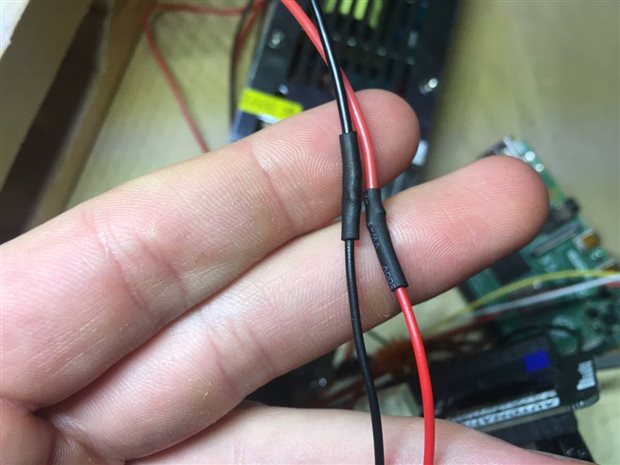| Previous blogs | Description |
|---|---|
| #1 - Introduction, the plan and materials preparation | In this blog post we describe the project's main concept and some initial high-level design of it. |
| #2 - Materials and casing assembly | Our journey with selecting proper materials, cutting and assembling the drawer and its casing! |
| #3 - Modelling, cutting, planting! | The title says it all: this part describes some modelling we did before cutting some holes in the drawer and finally planted some vegetables! |
| #4 - Plants, harvests, and fertilisers | First harvest, problems with plants and used fertilisers. All that went off-script for our plants in the artificial environment. |
| #5 - Piping and pumping - water and liquid fertiliser delivery system | Design and development of water supply system. |
| #6 - Mix of fixes - various fixes to water supply, lighting and hardware | Polish and fixes of various components of the system, all the small things. |
| Next blogs | Description |
|---|---|
| #8 - Pulling the strings | LED and Fan control circuit, overview of BJTs and MOSFETs with a handful of useful general information |
| Detailed description of 3D printed components, their presentation and some tips | |
| #10 - Software, architecture and the benefits of good preparation | Big explanation of the software and its architecture |
| #11 - Summary | Our final post before the end of the challenge! |
Introduction
Hi there!
In this post we will present how we created circuitry and wiring for the Envidrawer project. We will also underline issues we faced and our solutions to them! Let's get started
Because this project requires varying voltages, from 3.3 V for sensors, through 5 V for RPi and the water pump, finishing at 12 V for LEDs and fans, we had to be ingenuous with our designs and do somewhat complicated circuitry by ourselves. First of all because the project requires a considerable amount of current, we decided to go for a more sturdy one, which could be reused in a different project and provide proper protection for our devices (as a few of them will be directly connected to it). The PSU can provide up to 20 amps of current and outputs 12 V. In the table below currents for each of the loads are listed.
Voltage [V] | Current [A] | Load Type |
12 | 2 x 3 | LED strip |
12 | 2 x 0.8 | PC Fan |
12 | 2 x 0.03 | Capacitance sensor |
12 | 4 x 0.8 | DC Motor |
5 | 3 | Raspberry Pi |
5 | 0.2 | Water pump |
3.3 | up to 1 | Various sensors |
Wiring diagram
For those who are already eager to see the most important part of this post - the wiring, here it is!
The diagram presents all vital components of the project with appropriate pin assignments on the Raspberry Pi. Sensors will be connected to remaining pins or hooked up to the I2C bus in a future post. Right now they are being mounted 
Wire choices
Choosing the proper wire gauge was also essential, as the currents we are working with are not in milliamp ranges but rather in full amps for the power devices. Therefore we had to do some research on the topic. Interestingly, most websites are concerned with the current propagation in the free air, rather than in an encasing making the wire choice more expensive (because of thicker wires).
Nevertheless, basing on two websites, we chose wires that would provide a safe margin of current that can pass through them.
Wire gauge [AWG] | Length [m] | Device |
16 | 2 | Power wires |
18 | 2 | LED strips |
22 | 4-4.5 | DC Motors |
24 | 4 | Sensors |
Below you may see pictures of several wired-up components of our system as well as several ways in which we connected the wires.
The power supply unit wired up and operational
M3 Loophole connectors for easier cable mounting on the PSU
Automation hat connected and operational
DC Motor control L298N H-bridge with all 4 outputs wired up
Cables covered with heat-shrink tubes. This way they are more resistant to any damage and most importantly isolated.
Components chosen
Although we could build the H-bridge and the DC-DC step down converter by ourselves, we decided to stick to the pre-built PCB's which are very common and cheap. However, we built quite a complex control circuit by ourselves (which proved to be a thrilling experience, and a challenging undertaking!)
Although we had a 2 channel H-bridge it proved to be quite unsafe and simply put badly designed (for higher steering voltages than powering, the steering signal would be lost resulting in no control over the bridge!) - more information about it here
The DC-DC converter circuit could also be much simpler (for example LM350, but it would require a heatsink and not a small one  ), following with the trend we chose more modern component and one which can be reused.
), following with the trend we chose more modern component and one which can be reused.
Summary
It might seem simple, but proper wiring, planning the connections and making everything work took us a lot of time  In the upcoming post we plan to elaborate on the design and all the nuances of designing your own analog electronic circuits (which takes even more time) and some challenges that arose during this busy holiday season. See you soon!
In the upcoming post we plan to elaborate on the design and all the nuances of designing your own analog electronic circuits (which takes even more time) and some challenges that arose during this busy holiday season. See you soon!
Jakub & Szymon & Michał
| Previous post | Next post |
|---|---|
| #6 - Mix of fixes - various fixes to water supply, lighting and hardware | #8 - Pulling the strings |







Top Comments
-

DAB
-
Cancel
-
Vote Up
+1
Vote Down
-
-
Sign in to reply
-
More
-
Cancel
Comment-

DAB
-
Cancel
-
Vote Up
+1
Vote Down
-
-
Sign in to reply
-
More
-
Cancel
Children